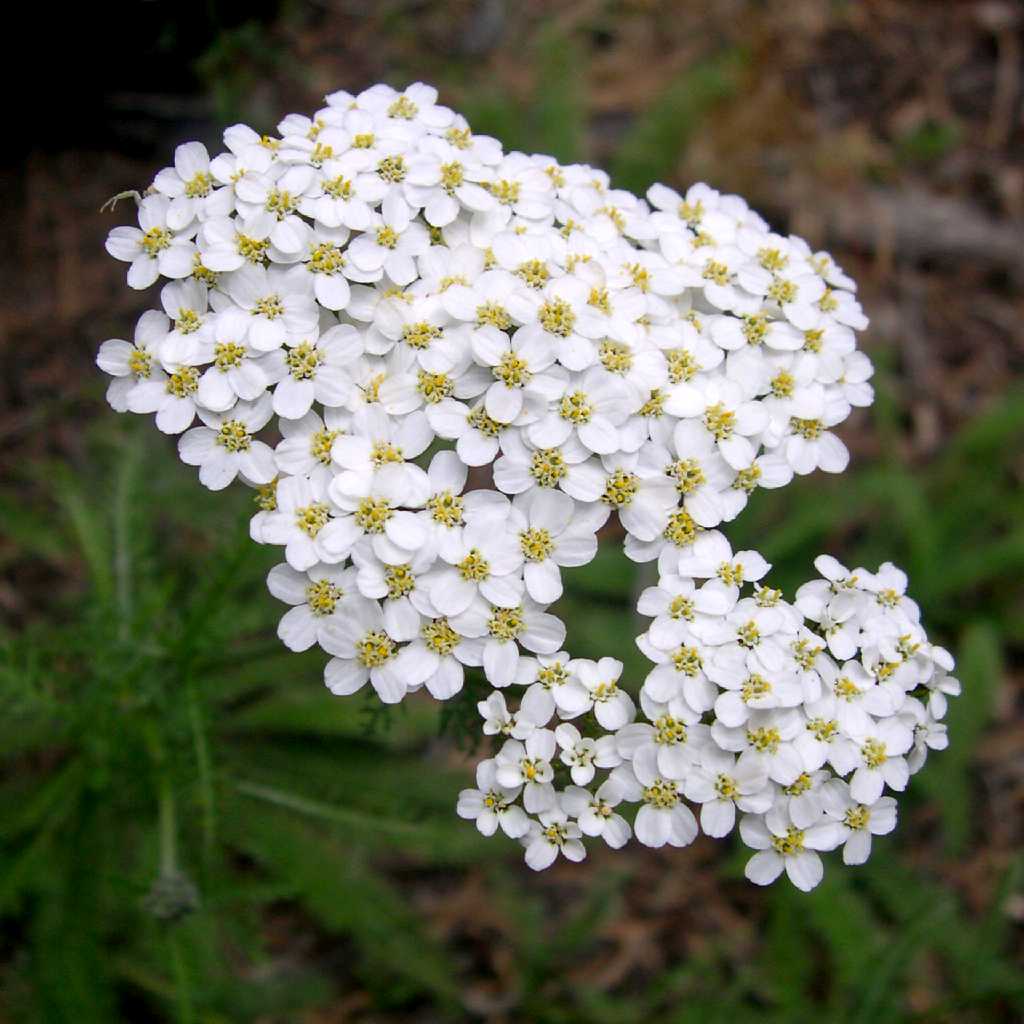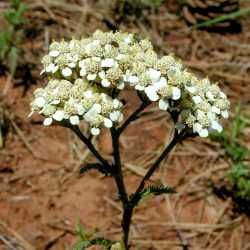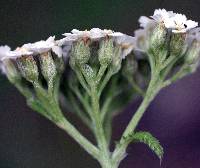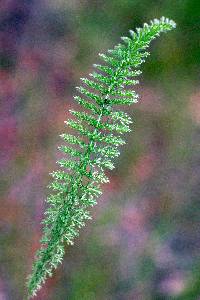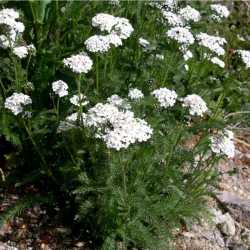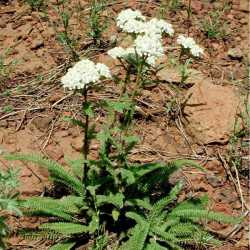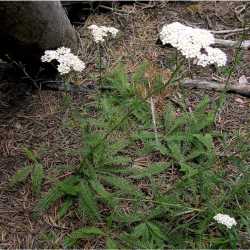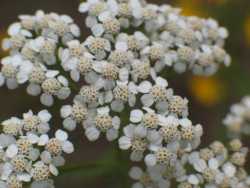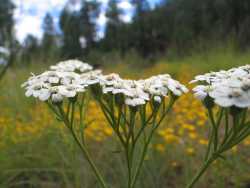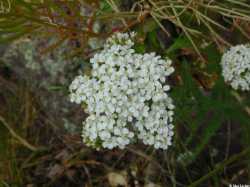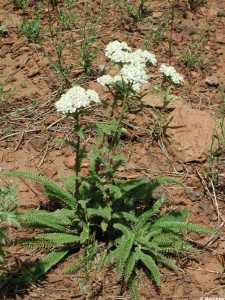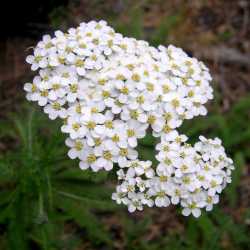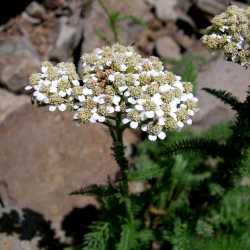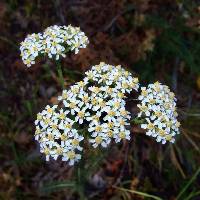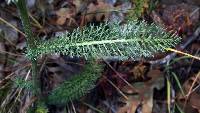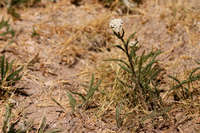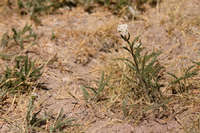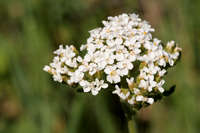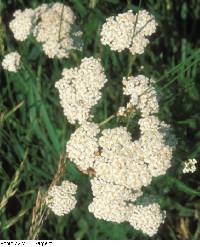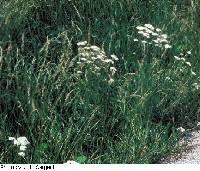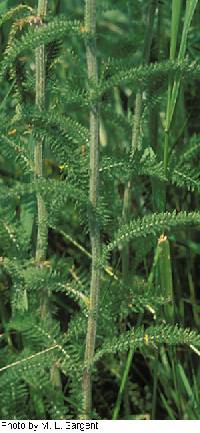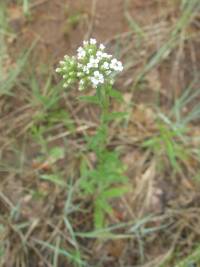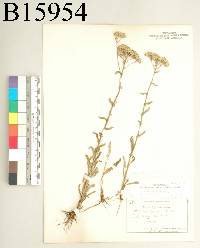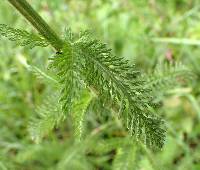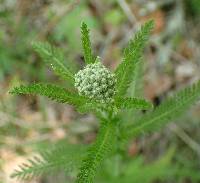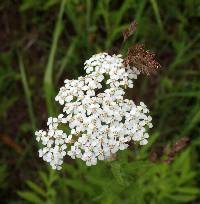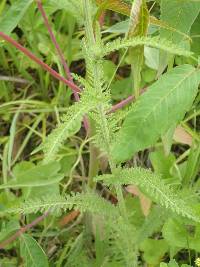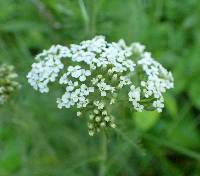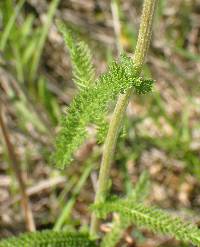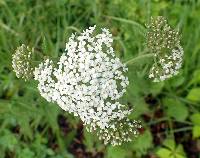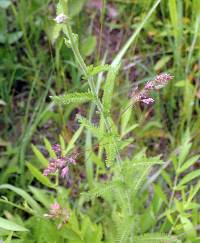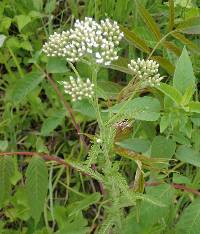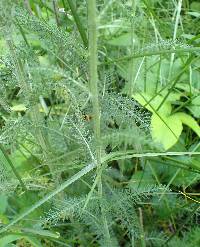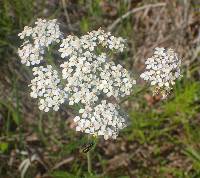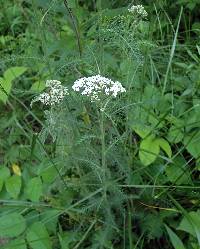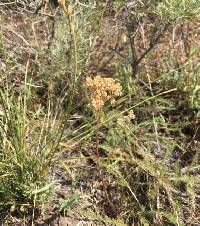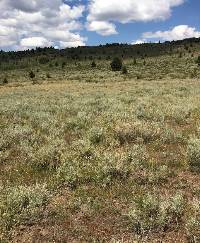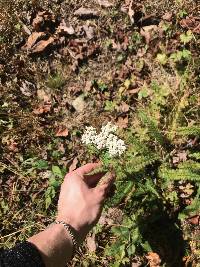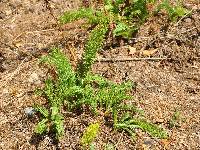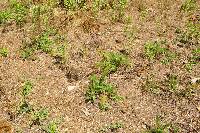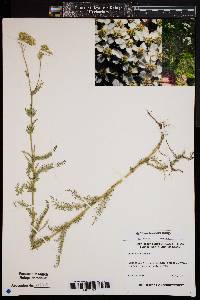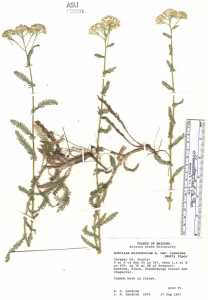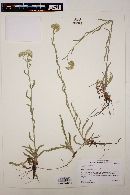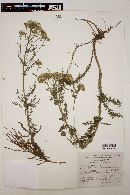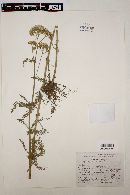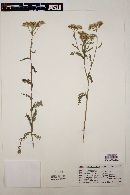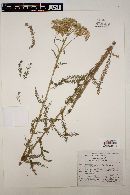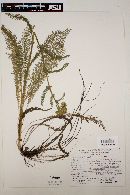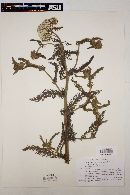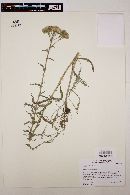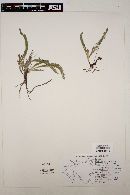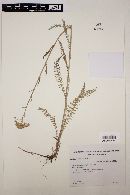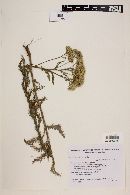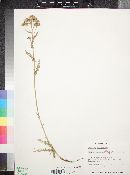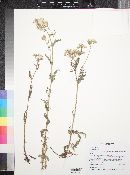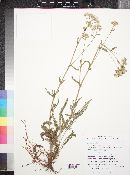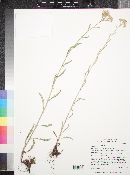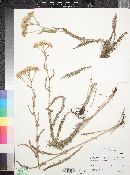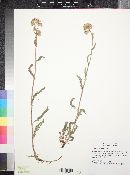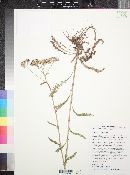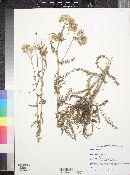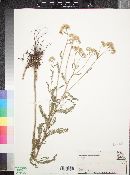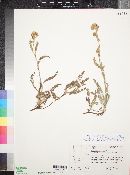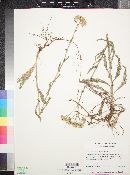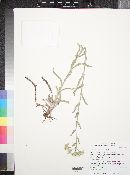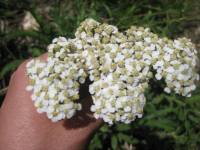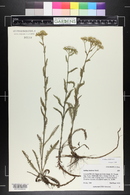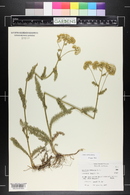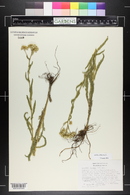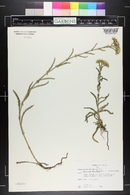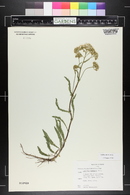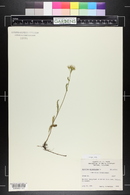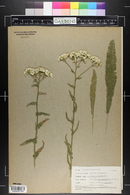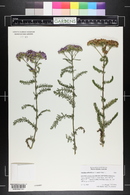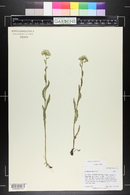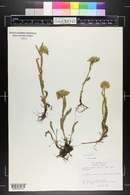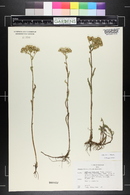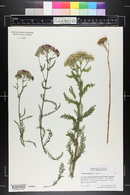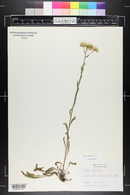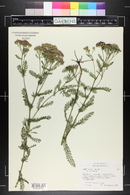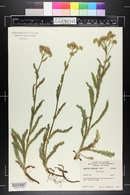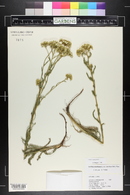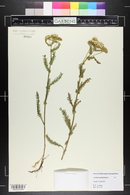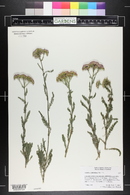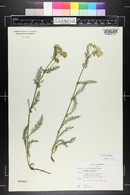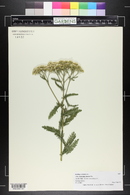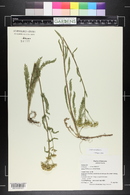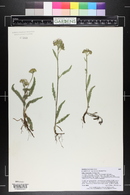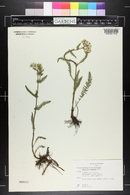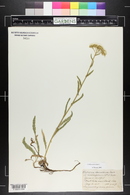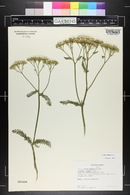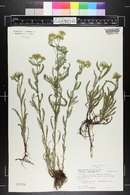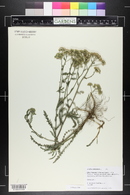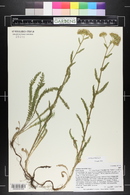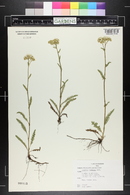
|
|
|
|
Family: Asteraceae
Common Yarrow, more...common yarrow, Woolly Yarrow, western yarrow (es: canfor)
[Achillea alpicola (Rydb.) Rydb., moreAchillea angustissima Rydb., Achillea arenicola A. Heller, Achillea aspleniifolia auct. non Vent., Achillea borealis Bong., Achillea borealis subsp. arenicola (A. Heller) D.D. Keck, Achillea borealis subsp. californica (Pollard) D.D. Keck, Achillea borealis subsp. typica D.D.Keck, Achillea borealis var. arenicola (A. Heller) J.T. Howell, Achillea borealis var. borealis , Achillea borealis var. californica (Pollard) J.T. Howell, Achillea californica Pollard, Achillea eradiata Piper, Achillea fusca Rydb., Achillea gigantea Pollard, Achillea gracilis Raf., Achillea lanulosa Nutt., Achillea lanulosa f. lanulosa , Achillea lanulosa ssp. lanulosa , Achillea lanulosa subsp. alpicola (Rydb.) Keck, Achillea lanulosa subsp. lanulosa , Achillea lanulosa subsp. megacephala (Raup) Argus, Achillea lanulosa subsp. typica Keck, Achillea lanulosa var. alpicola Rydb., Achillea lanulosa var. arachnoidea Lunell, Achillea lanulosa var. eradiata (Piper) M.E. Peck, Achillea lanulosa var. lanulosa , Achillea laxiflora Pollard & Cockerell, Achillea megacephala , Achillea millefolium subsp. atrotegula B.Boivin, Achillea millefolium subsp. borealis (Bong.) Breitung, Achillea millefolium subsp. lanulosa (Nutt.) Piper, Achillea millefolium subsp. occidentalis (DC.) Hyl., Achillea millefolium subsp. pallidotegula Boivin, Achillea millefolium var. alpicola (Rydb.) Garrett, Achillea millefolium var. arenicola (A. Heller) Nobs, Achillea millefolium var. aspleniifolia (Vent.) Farw., Achillea millefolium var. borealis Farw., Achillea millefolium var. californica (Pollard) Jeps., Achillea millefolium var. fulva B.Boivin, Achillea millefolium var. fusca (Rydb.) G.N. Jones, Achillea millefolium var. gigantea (Pollard) Nobs, Achillea millefolium var. gracilis Raf. ex DC., Achillea millefolium var. lanulosa (Nutt.) Piper, Achillea millefolium var. litoralis Ehrend. ex Nobs, Achillea millefolium var. maritima Jeps., Achillea millefolium var. megacephala (Raup) B. Boivin, Achillea millefolium var. nigrescens E. Mey., Achillea millefolium var. occidentalis DC., Achillea millefolium var. pacifica (Rydb.) G.N. Jones, Achillea millefolium var. parviligula B.Boivin, Achillea millefolium var. parvula B.Boivin, Achillea millefolium var. puberula (Rydb.) Nobs, Achillea millefolium var. rosea (Desf.) Torr. & Gray, Achillea millefolium var. russeolata Boivin, Achillea nigrescens (E. Mey.) Rydb., Achillea occidentalis (DC.) Raf. ex Rydb., Achillea pacifica Rydb., Achillea palmeri , Achillea puberula Rydb., Achillea rosea Desf., Achillea subalpina Greene, Achillea tomentosa Pursh, non L.] |
Perennials, 6-65+ cm (usually rhizomatous, sometimes stoloniferous). Stems 1(-4), erect, simple or branched, densely lanate-tomentose to glabrate. Leaves petiolate (proximally) or sessile (distally, weakly clasping and gradually reduced); blades oblong or lanceolate, 3.5-35+ cm × 5-35 mm, 1-2-pinnately lobed (ultimate lobes ± lanceolate, often arrayed in multiple planes), faces glabrate to sparsely tomentose or densely lanate. Heads 10-100+, in simple or compound, corymbiform arrays. Phyllaries 20-30 in ± 3 series, (light green, midribs dark green to yellowish, margins green to light or dark brown) ovate to lanceolate, abaxial faces tomentose. Receptacles convex; paleae lanceolate, 1.5-4 mm. Ray florets (3-)5-8, pistillate, fertile; corollas white or light pink to deep purple, laminae 1.5-3 × 1.5-3 mm. Disc florets 10-20; corollas white to grayish white, 2-4.5 mm. Cypselae 1-2 mm (margins broadly winged). 2n = 18, 27, 36, 45, 54, 63, 72 (including counts from Europe). Flowering late Apr-early Jul (south), mid Jul-mid Sep (north). Pastures, meadows, roadsides, stream sides, woodlands, waste grounds, dry or sandy soils, also in damp, clayey, and salty soils; 0-3600 m; Greenland; St. Pierre and Miquelon; Alta., B.C., Man., N.B., Nfld. and Labr., N.W.T., N.S., Nunavut, Ont., P.E.I., Que., Sask., Yukon; Ala., Alaska, Ariz., Ark., Calif., Colo., Conn., Del., D.C., Fla., Ga., Idaho, Ill., Ind., Iowa, Kans., Ky., La., Maine, Md., Mass., Mich., Minn., Miss., Mo., Mont., Nebr., Nev., N.H., N.J., N.Mex., N.Y., N.C., N.Dak., Ohio, Okla., Oreg., Pa., R.I., S.C., S.Dak., Tenn., Tex., Utah, Vt., Va., Wash., W.Va., Wis., Wyo.; Mexico; Eurasia. Achillea millefolium is morphologically variable and has been treated as either a single species with varieties or as multiple distinct species. At least 58 names have been used for North American specimens. Some early workers (e.g., J. Clausen et al. 1948) thought the native North American plants were taxonomically distinguishable from introduced, Old World plants. Other workers (e.g., R. J. Tyrl 1975) have treated A. millefolium as a cosmopolitan, Northern Hemisphere polyploid complex of native and introduced plants that have hybridized, forming diploid, tetraploid, pentaploid, hexaploid, septaploid, and octoploid plants and/or populations constituting a single, variable species. Morphologic characters that have been used to segregate these populations into species and/or varieties include: (1) degree and persistence of tomentum; (2) phyllaries with greenish, light brown, or dark brown margins; (3) shapes of capitulescences (rounded or flat-topped); and (4) degrees of leaf dissection and shapes of lobes. While examining specimens for this treatment, two general trends were noted: (1) Plants growing either at high latitudes or high elevations tend to have darker colored margins on the phyllaries. (2) Plants at high latitudes or elevations or from extreme desert locations tend to be more densely lanate than plants from less extreme habitats. These are only trends; variations in local populations due to local environmental conditions are to be expected. An eco-morphotype adapted to the Athabasca sand dunes of northern Saskatchewan has been known as A. megacephala or A. millefolium var. megacephala and has been treated as a taxon of special concern in Canada (V. L. Harms 1999).
FNA 2006, Kearney and Peebles 1969, McDougall 1973 Duration: Perennial Nativity: Native Lifeform: Forb/Herb General: Herbaceous perennials, to 0.5 m tall, stems erect, simple or branching, lightly to densely pubescent, sometimes silky, leafy, arising from a basal rosette, herbage aromatic, plants with creeping rootstocks. Leaves: Leaves alternate, linear to oblong and finely dissected into numerous linear to ovate divisions, these to 1 mm wide. Flowers: Small white or rarely pink ray and disk flowers, rays small and rounded, to 2 mm long, receptacles with dry, thin, membranaceous chaff, flowers borne in dense corymbose, terminal panicles. Fruits: Achenes with thick margins, compressed parallel to the phyllaries, pappus absent. Ecology: Found in damp, dry, salty, clayey, or sandy soils, mostly in the mountains, in pine forests, pastures, meadows, roadsides, disturbed areas, and streamsides, from 5,500-11,500 ft (1676-3505 m); flowering June-September. Distribution: Widespread, covering all of the United States, much of Canada, France, and Denmark. Notes: Accoding to Kearney and Peebles, this is a naturalized species, originating in Europe. Look for this species also under Achillea lanulosa. FNA states that this species has at least 58 known synonyms. Ethnobotany: An infusion of the whole plant was used to treat colds and fevers, sore throats, grippe, respiratory disorders, as a diuretic, to expel afterbirth, to suppress the menses, headaches, for liver troubles, hemorrhages, to assist in sleeplessness, chest pains, coughs, vomiting, sunstroke, cramps, venereal disease, as a blood purifier, an antibiotic, and to aid gastroenteritis. The leaves were used as a poultice for sores, swellings, rheumatism, bruises, and burns. An infusion was also used as a stimulant and eyewash for horses. Etymology: Achillea is named for Achilles, while millefolium means with many leaves. Synonyms: Achillea millefolium var. alpicola, Achillea millefolium var. occidentalis, Achillea alpicola, Achillea fusca, Achillea lanulosa subsp. alpicola, Achillea lanulosa var. alpicola, Achillea millefolium var. fusca, Achillea subalpina, Achillea angustissima, Editor: LCrumbacher 2011 Aromatic, rhizomatous perennial 2-10 dm, very sparsely to rather densely villous or woolly-villous; lvs pinnately dissected, the blade 3-15 cm, to 2.5 cm wide, the basal petiolate, all but the lowest cauline sessile; heads numerous in a flat or round-topped, short and broad, paniculate- corymbiform infl, the disk 2-4 mm wide; invol in ours 4-5 mm; rays ca 5, white or occasionally pink, 2-3 mm; disk-fls 10-30; x=9. Various habitats, but especially in disturbed sites, circumboreal, and throughout our range. June-Nov. A highly variable circumboreal polyploid complex, not yet satisfactorily sorted out into infraspecific taxa. Typical European A. millefolium, a hexaploid with flat lvs, the relatively broad ultimate segments all in nearly the same plane, is rarely intr. in our range. Our native forms are mostly tetraploid, with narrower lf-segments disposed in various planes so that the lf is airily 3-dimensional. These represent the transcontinental ssp. lanulosa (Nutt.) Piper, consisting of several vars. as yet not well understood. Another native tetraploid, called var. nigrescens E. Mey., extends into our range from the ne., reaching Mass. and n. Mich. It is a relatively small plant with flat lvs like typical millefolium, distinguished by the dark brown or nearly black margins of the invol bracts. Gleason, Henry A. & Cronquist, Arthur J. 1991. Manual of vascular plants of northeastern United States and adjacent Canada. lxxv + 910 pp. ©The New York Botanical Garden. All rights reserved. Used by permission. From Flora of Indiana (1940) by Charles C. Deam This is a polymorphic species. Our species vary greatly in the pubescence of the stem, leaves, and involucre, in the shape and size of the heads, in the color of the margins of the bracts, and in the shape of the inflorescence. Plants with pinkish rays are not infrequent. These variations have led authors to describe several forms of this species. It is an obnoxious weed, especially in pastures, although some faddists recommend it for lawns. It spreads by creeping rootstocks and is difficult to exterminate. It is found everywhere in dry soil except in deep woodland and cultivated fields. ...... Indiana Coefficient of Conservatism: C = 0 Wetland Indicator Status: FACU Diagnostic Traits: Leaves alternate and pinnately dissected; inflorescences flat-topped; ray flowers white, up to 3 mm long. |
|
|
|

